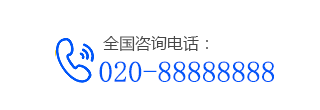

— News —
 Service Hotline +86-15618746768
Service Hotline +86-15618746768 Email:services@qinsun-lab.com
Landline:+8615618746768
Telephone:+86-15618746768
Address:Unit 3A, 20/F,Far East Consortium Building,121 Des Voeux Road Central, Hong Kong
Technical News
time:2025-08-01 click:
Test Mode: Automatic
Test Speed: 10-200mm/s
Stroke: 10-200mm
Number of Scrapes: Adjustable
Scraper Head Size: Interchangeable
Weight: 45kg
Scraper Head Lift: Manual
Control Panel: Smart Touchscreen
Scraper Fingers: 5
External Dimensions: 650mm x 600mm x 700mm

This tester is widely used in the automotive industry. It primarily tests the wear resistance of smooth and textured plastic trim on automotive interior and exterior parts. Besides material and product development, it is also suitable for quality control. The Five-Finger Scratch/Scratch Tester is designed for evaluating plastic materials, testing the wear resistance of hard materials, testing paints, inks, soft metals, linoleum, accessories, and other materials. This instrument meets various testing standards and can customize the test platform's travel, speed, and reciprocating cycle to meet customer requirements. In a Five-Finger Scratch Tester, a specimen on the test platform is exposed to five scratching fingers or one plastic scratching finger and a weight applied above it. During the test, the test platform moves, and the scratching fingers leave scratches on the specimen surface. The depth of the scratches determines the specimen's scratch resistance. Specimens can be plastic panels, painted or varnished test panels, and more.
1. Preparation before the test: (1) Place the instrument on a stable and flat test bench, with the operator facing the instrument, and then open the instrument packaging box. (2) Loosen the slide rod fixing screw; take out the ruler slide rod (with scale) and the ruler support rod (without scale) from the accessory box, and insert them into the holes on the left and right sides of the ruler bracket respectively (the flat end of the ruler slide rod is inserted into the hole); when the circle mark at the end of the ruler slide rod just emerges from the back of the ruler bracket, tighten the slide rod fixing screw to fix the ruler slide rod, and the ruler support rod can slide freely in the hole. (3) Remove the ruler from the ruler bracket, with the scale side facing the operator, align the bearing hole in the middle of the ruler with the ruler slide rod, and insert it into the hole. (4) Pick up the right end of the ruler, pull out the ruler support rod, put down the ruler, and place the ruler on the ruler support rod. (As shown in the cover image)
(5) Take out the diamond stylus and insert it into the hole in the center of the protrusion in the middle of the ruler, and fix it with the set screw on the right.
1. Weight screw 2. Ruler adjustment screw 3. Slide rod fixing screw 4. Ruler bracket screw 5. Mark 6. Weight 7. Diamond stylus 8.
Center screw 9. Specimen fixing nut 10. Specimen pressure plate 11. Start button 12. Specimen turntable 13. Ruler slide rod 14. Ruler support rod
(6) Insert the power plug into the power socket on the wall and turn on the power.
2. Operation:
(1) Process the plate to be measured to the size specified in the standard (thickness shall not exceed 10mm) and drill an 8mm hole in its center. (2) Unscrew the specimen fixing nut, remove the specimen pressure plate, place the processed test plate with the test surface facing up on the specimen turntable, insert the center hole into the center screw, place the specimen pressure plate, and tighten the specimen fixing nut. (3) Push in the ruler support rod, lower the ruler, and make the diamond stylus tip touch the surface of the test plate. (4) Loosen the ruler bracket screw. (5) Turn the ruler adjustment screw to adjust the ruler to a horizontal position. (Observe the spirit level at the top of the weight and make the bubble between the two scale lines in the center. The ruler is in a horizontal position.) (6) Tighten the ruler bracket screw. (7) Loosen the weight screw, move the weight to the required load scale* (align the right edge of the weight with the scale), and tighten the weight screw. (8) Press the start button and hold for 2 seconds. The specimen turntable starts to rotate and stops after one rotation. Remove the specimen and observe the scratches on the specimen surface. (9) After all tests are completed, remove the parts of the instrument, put them back to their original places, and cover the packaging box to protect the cleanliness of the instrument.
Related